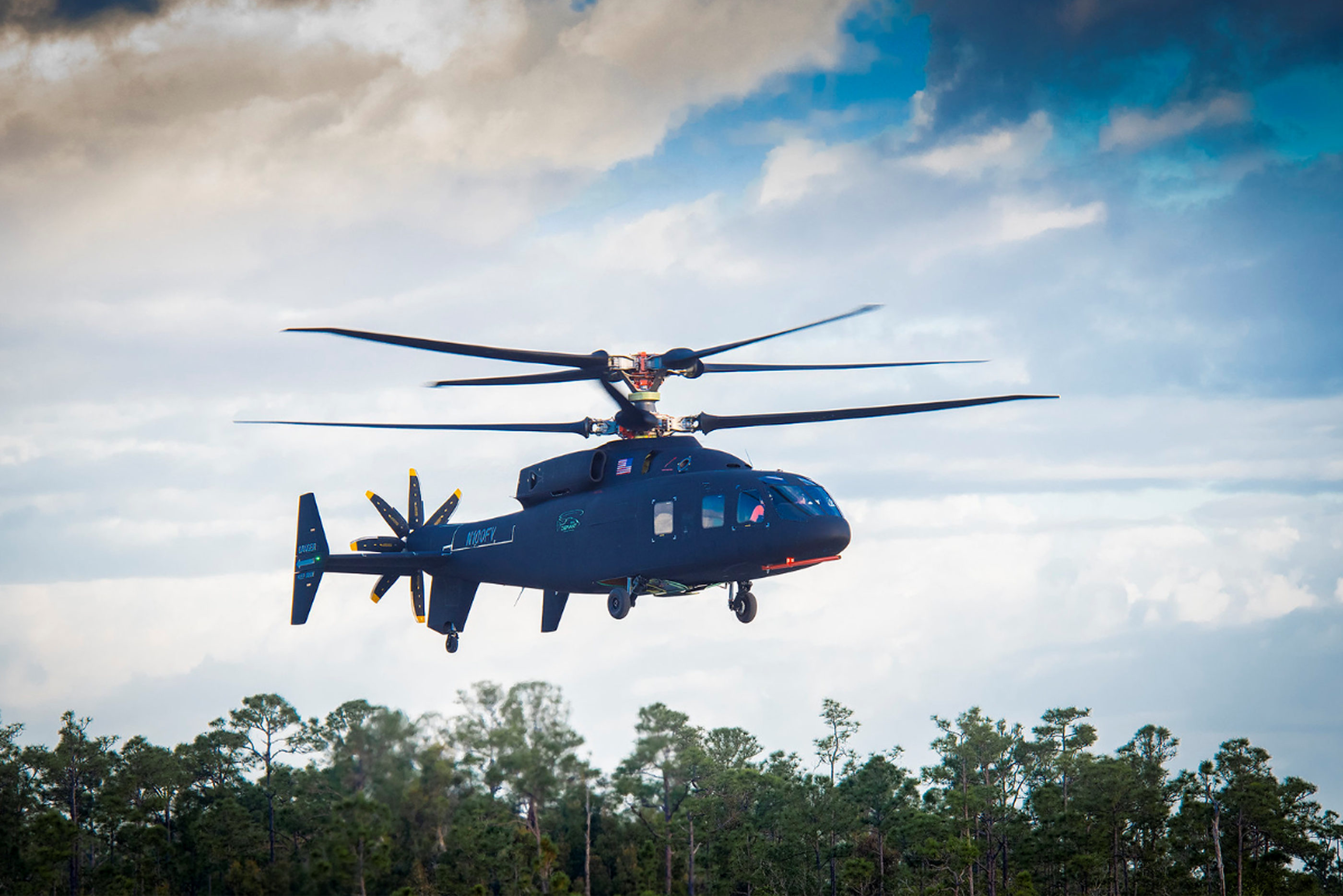The Boeing-Sikorsky SB-1 Defiant returned to flight Sept. 24 following a several-week stand down for tweaks to the drive train system aimed at avoiding “bearing creep” found on the ground-based propulsion system test bed (PSTB).

The Defiant has now logged about three hours of flight test, with the latest lasting about an hour at the Sikorsky’s flight test center in West Palm Beach, Florida, according to Boeing FVL program manager Ken Eland. It first flew in March and lifted off twice more in April.
Following the first three test flights, the engineering team disassembled and inspected the PSTB, which mimics the stress put on Defiant’s drive train system without leaving the ground. When it was taken apart, the main rotor gear box was found to have ground some of its bearings. The situation is caused when slippage occurs between fitted surfaces like gear teeth, which causes clearance and is not uncommon in new-build rotorcraft. Bearing creep was not found on the Defiant itself, Eland said.
While not an emergency, the bearing creep found in the test article caused the engineering team to feel “uncomfortable proceeding” with the flight test until tweaks were made to Defiant’s drive train, he said.
“The base program has not been as expected,” Eland said Oct. 15 at the Association of the U.S. Army’s annual conference in Washington, D.C. “We found something we weren’t ecstatic about, so we implemented a fix for that.”
Applying the fix to both the test bed and the aircraft, then running the test bed to ensure the issue was corrected, cost the flight test program between six and eight weeks in 2019, he said. In 2018, the team announced plans to have more than 100 flight hours under its belt by the end of this year. It currently has three.
“We could have gotten away with waiting on the aircraft, but . . . it saved us weeks, if not months, to do it now as opposed to pushing it out as far as we could and then having to make that modification because we were still waiting for the PSTB to come back up and get more data run to expand the envelope,” Eland said.
The compound coaxial helicopter has an aft pusher propulsor, the same basic configuration as its smaller brother, the S-97 Raider. So far, Defiant has flown 20 knots in every direction without the propulsor engaged, Eland said. Plans are to expand the performance envelope to 40 knots in the next test flight, scheduled in about two weeks, and then to increase speed in 40-knot increments out to 250 knots.
The 33,000-pound aircraft is aimed at fulfilling the Army’s need for a Future Long-Range Assault Aircraft, or FLRAA. Advanced white papers for FLRAA were due Oct. 1. Based on those white papers, the Army plans in February 2020 to choose two competitors to build prototype aircraft that will fly off for a contract award scheduled for early 2022.
The bearing creep issue is an example of how the ongoing flight test program will continue to inform and help refine the Defiant team’s FLRAA entry, Eland said .
“Flight test will inform our micro design, not our macro design,” Eland said, meaning whatever comes out of flight testing, the team’s FLRAA pitch will ultimately look almost identical to the experimental aircraft currently flying, with a few tweaks.









